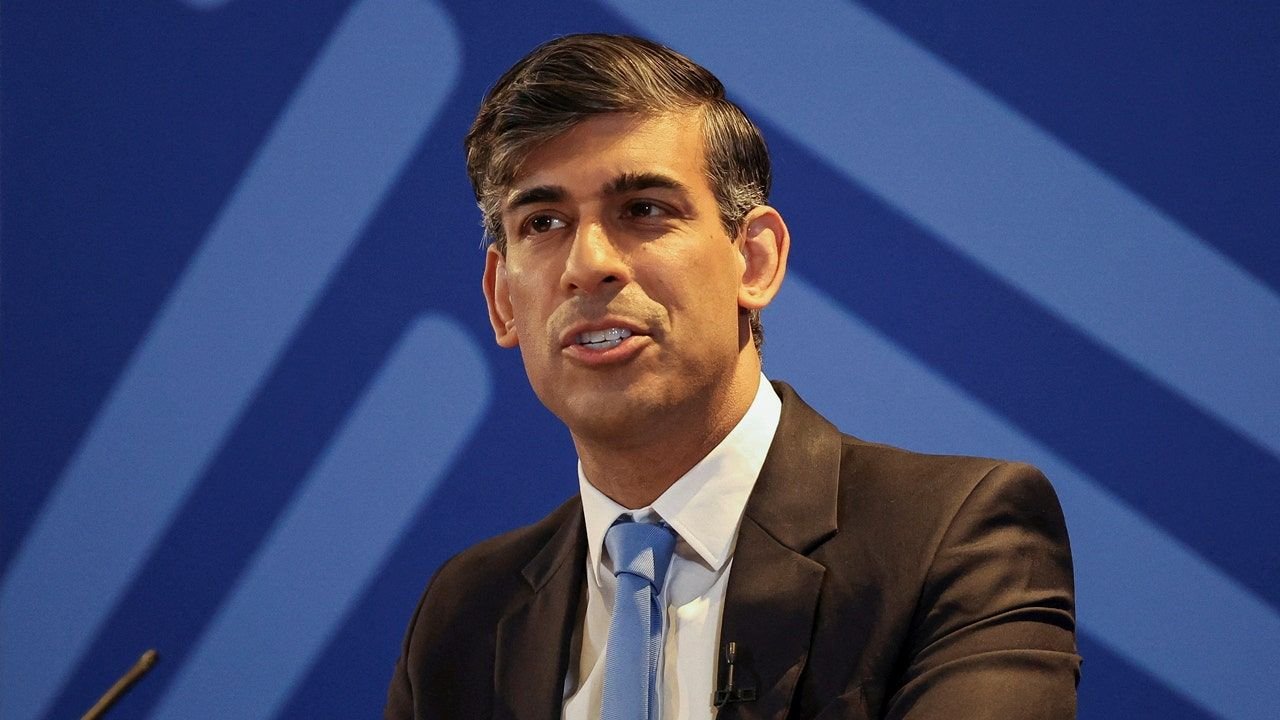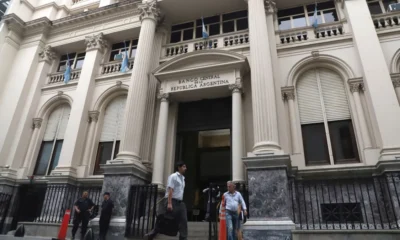INTERNACIONAL
These are the key contenders in the UK's fast-approaching national election

- On Thursday, millions of citizens in Britain will vote for a new House of Commons and a new government.
- The current prime minister, Rishi Sunak, and his Conservative party are widely expected to lose to the main opposition party, the left-of-center Labour party.
- Other parties running include the Liberal Democrats, the populist Reform UK party, the Scottish National Party, and the environmentalist Green Party.
Millions of voters in Britain are going to the polls Thursday to choose a new House of Commons and a new government.
Voters will elect 650 lawmakers representing as many constituencies, or local areas, and the leader of the party that returns the most lawmakers will become prime minister.
Prime Minister Rishi Sunak’s Conservatives are widely expected to lose to the main opposition party, the left-of-center Labour, after 14 years in power under five different prime ministers.
UK PARLIAMENTARY CANDIDATE RUNS AS ‘FIRST AI LAWMAKER’ WITH INTERACTIVE AI AVATAR
The Conservatives and Labour traditionally dominate British politics under the U.K.’s «first past the post» electoral system, which makes it difficult for smaller parties to win representation in Parliament.
But also in the running are the Liberal Democrats, Reform UK, the Scottish National Party and the Greens, among others.
Here’s a look at the parties, who’s leading them and what they are promising:
British Prime Minister Rishi Sunak speaks during a Conservative general election campaign event in Edinburgh, Scotland, on June 24, 2024. (Phil Noble/Pool Photo via AP, File)
CONSERVATIVES
Who is the leader of the British Conservative party?
Prime Minister Rishi Sunak.
Sunak, 44, came to power in October 2022 when he inherited a Conservative Party and an economy in turmoil after Liz Truss’s short-lived premiership. The Oxford graduate and former Goldman Sachs hedge fund manager is Britain’s first leader of color and the first Hindu to become prime minister. Sunak has stressed he is the man who steadied the ship, but critics say he lacks political judgment and is out of touch with ordinary voters.
How many seats did the Conservatives win in the last election?
365
What are the Conservatives promising?
Delivering a stronger economy and cutting taxes by some 17 billion pounds per year. Increasing public health spending above inflation, and boosting defense spending to 2.5% of GDP by 2030. The party says this will be paid for by savings on tax evasion and slashing welfare spending. The party also pledges to cap immigration numbers and remove some asylum-seekers to Rwanda.
LABOUR
Who is the leader of the British Labour party?
Keir Starmer.
The 61-year-old lawyer, a former chief prosecutor for England and Wales, is the current favorite to be Britain’s next leader. A centrist and pragmatist, Starmer has worked hard to steer his party away from the more overtly socialist policies of former leader Jeremy Corbyn and quelled internal divisions. Critics call him unexciting and unambitious, but Labour has surged in popularity under his leadership.
How many seats did the Labour party win in the last election?
202
What is the Labour party promising?
Promoting «wealth creation,» encouraging investment and improving Britain’s infrastructure like railways under a 10-year infrastructure strategy. Setting up a state-owned clean power company to boost energy security, paid for by a windfall tax on oil and gas giants. Taxing private schools to pay for thousands of new teachers in state schools. Cutting record-high public health waiting times.
LIBERAL DEMOCRATS
Who is the leader of the British Liberal Democrats?
Ed Davey.
Davey, 58, was first elected to Parliament in 1997. The former economics researcher served as the government’s energy and climate change secretary under an uneasy Conservative-Liberal Democrat coalition from 2012 to 2015. Davey became leader of the left-of-center Lib Dems in 2019 and was not a household name until this election, when he made headlines with multiple zany stunts — including bungee-jumping to urge voters to take «a leap of faith.»
How many seats did the Liberal Democrats win in the last election?
11
What are the Liberal Democrats promising?
Improving Britain’s overstretched health and social care systems, including introducing free nursing care at home. Investing in renewable energy and home insulation. Clamping down on sewage-dumping water companies. Lowering the voting age to 16. Rejoining the European Union’s single market.
REFORM UK
Who is the leader of Reform UK?
Nigel Farage.
Farage, a political firebrand who takes pride in being the disruptor in British politics, has posed a serious headache to the Conservatives since he announced he is running in the election. The 60-year-old populist has long divided opinion with his anti-migrant rhetoric and Euroskeptic stance. A key proponent of Brexit, Farage is capturing many disillusioned Conservative voters with his promises to cut immigration and focus on «British values.» Farage previously ran for Parliament seven times but never won.
How many seats did Reform UK win in the last election?
None — though the party gained its first lawmaker this year when ex-Conservative Party deputy chair Lee Anderson defected to Reform.
What is Reform UK promising?
Freezing all «nonessential immigration» and barring international students from bringing their dependents with them. Leaving the European Convention on Human Rights so that asylum-seekers can be deported without interventions from rights courts. Scrapping «net zero» goals to reduce greenhouse gas emissions in order to bring down energy bills.
SCOTTISH NATIONAL PARTY (SNP)
Who is the leader of the Scottish National Party?
John Swinney.
Swinney, 60, became the SNP’s third leader in just over a year in May. The politician has sought to bring stability to the party, which has been in turmoil since Scotland’s long-serving First Minister Nicola Sturgeon abruptly stepped down last year during a campaign finance investigation that eventually led to criminal charges against her husband. Swinney has long served the party: he joined its ranks at 15 years old, and previously led the party from 2000 to 2004.
How many seats did SNP win in the last election?
48
What is the Scottish National Party promising?
Swinney has said that if his party wins a majority of seats in Scotland he will try to open Scottish independence negotiations with the London-based U.K. government. He wants to rejoin the European Union and the European single market. He also called for boosting public health funding, scrapping the U.K.’s Scotland-based nuclear deterrent, and an immediate cease-fire in Gaza.
GREEN PARTY
Who leads the Green Party?
Carla Denyer and Adrian Ramsay.
CLICK HERE TO GET THE FOX NEWS APP
Denyer, a mechanical engineer, worked in wind energy before she joined the Greens in 2011. The 38-year-old served as a local politician for the southwestern English city of Bristol for nine years. In 2021 she was elected co-leader of the Greens along with Ramsay, also a local government politician who has experience working with environmental charities.
How many seats did the Greens win in the last election?
1
What is the Green Party promising?
Phasing out nuclear power and getting the U.K. to net zero by 2040. The Greens have pledged 24 billion pounds a year to insulate homes and 40 billion pounds a year invested in the green economy, to be paid for by a carbon tax, a new wealth tax on the very rich and an income tax hike for millions of higher earners.
INTERNACIONAL
Presidenciales en Irán: un cambio que puede iniciar una nueva era en la geopolítica regional

En Irán fracasaron todos los pronósticos. Se suponía que el régimen aseguraría el resultado de las elecciones para que el relevo del fallecido presidente Ibrahim Raisi, un disciplinado alfil del anciano líder supremo Ali Khameni, no dejara lugar a sorpresas.
Ese interés del poder se alimentaba de la preocupación por el trasfondo de una extendida crisis social y de rechazo a la teocracia que explica que muy poca gente haya ido a votar en la primera vuelta del viernes donde el favorito era un líder ultraconservador, Said Jalili.
Pero quemando los papeles se adelantó en esa cita el médico Masud Pezeshkian y lo confirmó ahora en el balotaje. El líder reformista había hecho campaña levantando las consignas de la juventud y las mujeres en contra de la política de represión de la “policía de la moral” que había conducido el fallecido Raisi.
Una de las banderas de la rebelión ha sido el repudio al uso del velo, cuya imposición con el falso pretexto de su carácter islámico, cuestiona el nuevo presidente.La obligación del uso de esa prenda ha sido una herramienta para la represión de la población, en un país con una mayoría de jóvenes con su futuro cancelado por la crisis debido a las sanciones occidentales y los pésimos manejos de la economía por parte de la revolución.
Hay desocupación, inflación y consecuente ausencia de crecimiento individual. Ese reproche está en la base de las protestas que estallaron desde 2022 por el asesinato a manos de la policía de la joven Mhasa Amini, con la excusa del mal uso del velo,y que pusieron en duda la continuidad del régimen.
Raisi era un líder manipulable y pusilánime, respaldado pícaramente por los poderosos Guardianes de la Revolución como uno de los candidatos a relevar a Khamenei. Falleció en un accidente de helicóptero en mayo, lo que obligó a adelantar las elecciones con estos resultados imprevistos.
El hecho de que Pezeshkian haya logrado superar todas las barreras y alcanzar la presidencia constituye un mérito propio, pero claramente un indicador del tamaño de la crisis interna que reduce la capacidad de manipulación por parte del régimen.
Es difícil por ahora construir pronósticos. Ni el mundo ni los iraníes son ingenuos, de modo que las expectativas están atadas a los movimientos del nuevo mandatario que deberá lidiar con un Legislativo ultraconservador que no le hará el camino sencillo. Reputados especialistas en Irán, como el israelí Danny Citrinowicz, aclaran, sin embargo, que los presidentes en Irán tienen “muchas herramientas para influir en la política interna y externa”.
Esta novedad repite en otro formato la llegada al poder la década pasada del líder moderado Hassan Rohani, un aperturista del ala moderada fundada por sus mentores, los ex presidentes Akbar Hashemí Rafsanjani y Mohammar Khatami. Rohani fue quien negoció con el entonces presidente norteamericano Barack Obama el histórico pacto de Viena en 2015 que congeló el programa nuclear iraní a cambio del levantamiento de las sanciones.
 Lider supremo, Ayatollah Ali Khamenei. AP
Lider supremo, Ayatollah Ali Khamenei. APEse acuerdo lo derribó Donald Trump para conformar a Israel y Arabia Saudita y habilitar una lluvia de penalidades que asfixiara a la potencia persa. El resultado fue el regreso de los ultranacionalistas y la reanudación del programa atómico, esta vez con un rango de enriquecimiento de uranio que permitiría a Irán en breve contar con la bomba
Pezeshkian ha dicho que quiere volver negociar con EE.UU., y con el regreso a la cancillería de un conocido en Occidente, el diplomático Mohammad Zarif, clave en aquellas negociaciones. También, con el contexto de un vinculo de confianza con Riad que arrancó en 2023 por mediación de China.
Israel verá como se acomoda a este nuevo escenario que apagaría en parte la imagen de un enemigo necesario para los integristas asociados al gabinete del premier Benjamín Netanyahu. Una desorientación que en mayor medida atrapará a Hamas y a la milicia libanesa de Hezbollah.
Como señala Citrinowicz, “no es el amanecer de un nuevo día en Irán, pero sí estamos al principio de una nueva era”.
-
POLITICA3 días ago
Tras romper con Macri, Patricia Bullrich negó su salida del PRO: “Ni loca me voy, nos quedamos”
-
POLITICA22 horas ago
Detuvieron a un hombre armado a metros del acto de Milei en San Juan
-
ECONOMIA2 días ago
La inflación de junio rondaría el 5,2% según los analistas consultados por el Banco Central
-
SOCIEDAD3 días ago
Caso Loan: Camila declaró por más de cinco horas y al salir pidió que encuentren al nene
-
POLITICA2 días ago
El Gobierno busca bajar la tensión con el PRO y dice que cumplirá el fallo por la coparticipación a la Ciudad que reclamó Macri
-
POLITICA2 días ago
Federico Sturzenegger es el nuevo ministro de Desregulación y Transformación del Estado





























